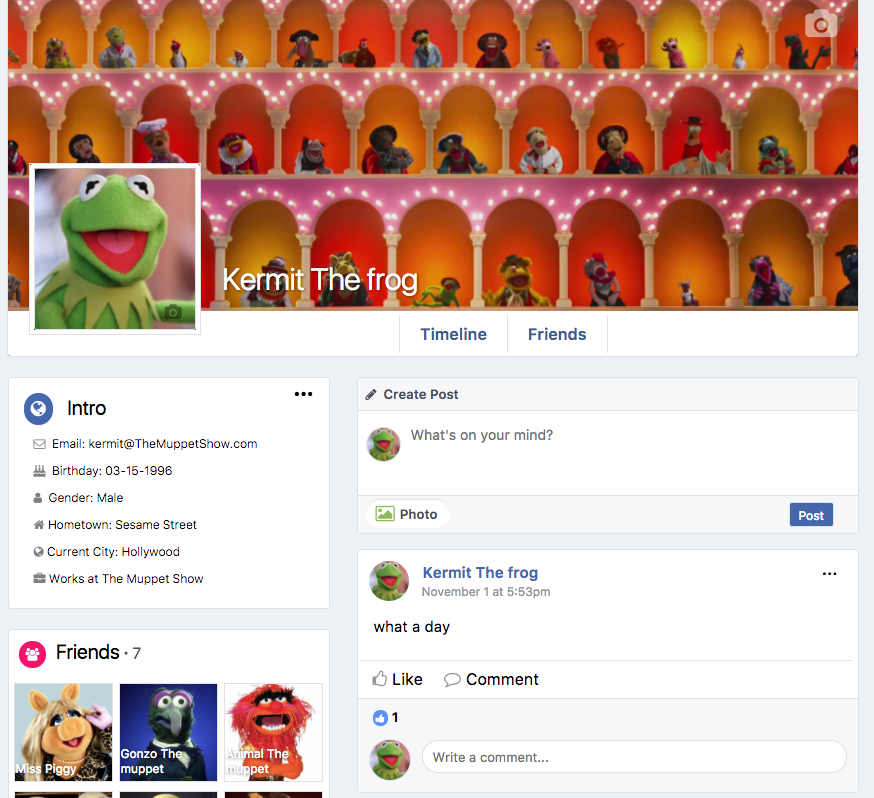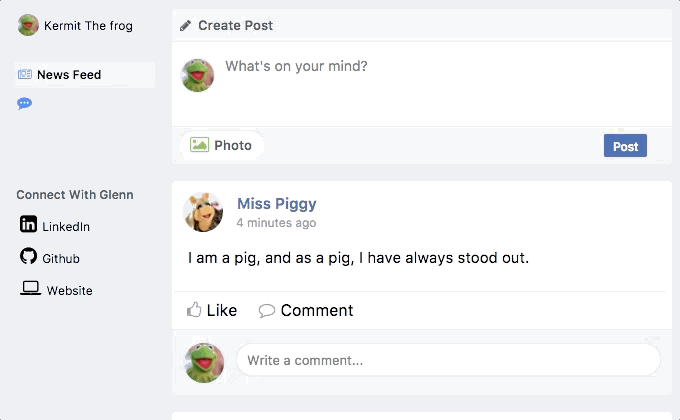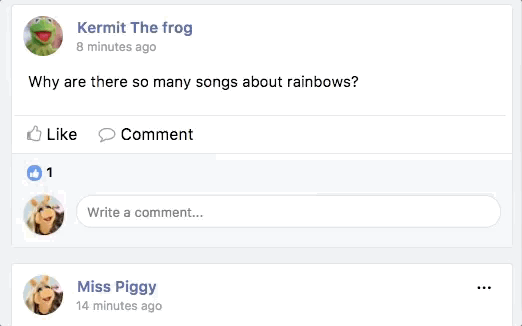farcebook is a Facebook-inspired full-stack web application built upon a Rails framework. farcebook uses a PostgreSQL database and React for the rendering of frontend components, with Redux being used for state management.
farcebook LIVE
Once a user signs up for an account, a profile page is created for them. Each profile includes a header that stores a profile picture and cover photo, an Intro section, which displays all of the current users information, a Friends section, which shows the users first 9 friends, and a feed that shows all of the posts posted by the user and posted to the users wall.
Photos are hosted using an AWS S3 bucket and upladed and stored into the database using the paperclip gem.

Users share information with others through Post and Comment components. Posts can be posted directly onto another users wall or posted on their own wall (with the posts receiver_id being equal to their own id). Users are also able to upload an image to be shared along with each post.
Once created, posts can be both edited and deleted. An author can both edit and delete all of their posts, while the receiver of a post can only delete them.
To show approval, users can choose to Like a post. Posts show not only the number of likes received, but also the list of those users that liked it.

Users can also leave comments onto posts. Comments are displayed in order based on when they were created. Comments can also be replied to with other comments, with each comment showing all of their nested comments. Comments are associated to other comments through an optional parent_comment_id.
Users can also choose to Like comments in the same fashion as posts. This is done using one table through the use of a polymorphic association, which uses a likable_type to store what kind of item is being liked.

A Notification is created and sent to another user when any user posts on their wall or any of their posts/comments are liked/commented on. This is once again achieved using a polymorphic associated that keeps track of which item is being notified on.
Users have a visual indicator on their navbar that shows whenever they have any new, unseen notifications and a dropdown that shows a list of all of their recent notifications. Each NotificationListItem shows the other users name and the action that took place, as well as links to the item in question when clicked on.
I utilized eager loading using ActiveRecord to optimize my database queries and increase performance. When fetching the feed for a user, all relevant information is also queried along with each post for later usage.
#posts_controller.rb
...
def feed
...
author_ids = @current_user.friend_ids + [@current_user.id]
@posts = Post.includes(comments: [{likes: :liker}, :child_comments], likes: :liker)
.where('author_id IN (?) OR receiver_id = ?', author_ids, @current_user.id)
.limit(10)
.order(updated_at: :desc)
.distinct
...To protect users, a lot of functionality for commenting and posting on walls is protected behind being having a friendship between the users. This is done through the use of conditional rending in React, checking to see if the current user is a friend of the post author or owner of the profile or if the current user is trying to interact with their own posts/profile.
// post_show.jsx
// Showing comment form on Posts
...
{ (areFriends || isCurrentUser) &&
<CommentForm postId={id}/>
}
...
// post_form.jsx
// Showing Post form on user profiles
...
render() {
if (!currentProfileFriends.includes(currentUserId)) {
return null
}
...